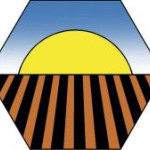- المجال: Earth science
- Number of terms: 26251
- Number of blossaries: 0
- Company Profile:
An international scientific society that fosters the transfer of knowledge and practices to sustain global soils. Based in Madison, WI, and founded in 1936, SSSA is the professional home for 6,000+ members dedicated to advancing the field of soil science. It provides information about soils in ...
Collecting remotely sensed data from different types of platforms with ground data from the same geographic area.
Industry:Earth science
Nematodes, oligochaete worms, smaller insect larvae, and microarthropods.
Industry:Earth science
Mineral soils that have an aridic moisture regime, an ochric epipedon, and other pedogenic horizons but no oxic horizon. (An order in the U. S. system of soil taxonomy. )
Industry:Earth science
Air preassure above atmospheric applied to soil to impart an equivalent soil water matric potential.
Industry:Earth science
A unit of soil structure such as a block, column, granule, plate, or prism, formed by natural processes (in contrast with a clod, which is formed artificially).
Industry:Earth science
மண்ணின் நிலத்தடி மண் நீர் (இருத்தும்) ஆற்றலை நிலைநிறுத்த தேவையான காற்று மண்டல அழுத்தத்தை விட மிகையான காற்றடைத்த அழுத்தம்.
Industry:Earth science
Number of microorganisms that can form colonies when cultured on artifical media using spread plates or pour plates: an indication of the number of viable, culturable microorganisms in a soil or rhizophere sample.
Industry:Earth science
Mineral particles, <2. 0 mm in equivalent diameter, ranging between specified size limits. The names and size limits of separates recognized in the USA are: very coarse sand (Prior to 1947 this separate was called "fine gravel;" now fine gravel includes particles between 2. 0 mm and about 12. 5 mm in diameter), 2. 0 to 1. 0 mm; coarse sand, 1. 0 to 0. 5 mm; medium sand, 0. 5 to 0. 25 mm; fine sand, 0. 25 to 0. 10 mm; very fine sand, 0. 10 to 0. 05 mm; silt, 0. 05 to 0. 002 mm; and clay (Prior to 1937, "clay" included particles <0. 005 mm in diameter, and "silt," those particles from 0. 05 to 0. 005 mm) <0. 002 mm. The separates recognized by the International Society of Soil Science are: (i) coarse sand, 2. 0 to 0. 2 mm; (ii) fine sand, 0. 2 to 0. 02 mm; (iii) silt, 0. 02 to 0. 002 mm; and (iv) clay, <0. 002 mm.
Industry:Earth science
In fertilizer trade terminology, phosphate is used to express the sum of the water-soluble and the citrate-soluble phosphoric acid (P2O5); also referred to as the available phosphoric acid (P2O5).
Industry:Earth science
Plants characteristically associated with specific soil or site conditions, such as soil acidity, alkalinity, wetness, or a chemical element.
Industry:Earth science
